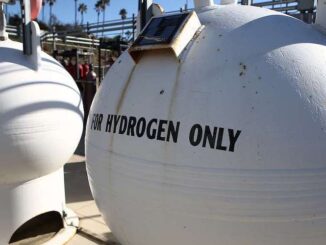
It has now been seven years since the government’s glacier-size tables have been updated
By Roger Roots, J.D., Ph.D.
For the past seven years I have journeyed to Glacier National Park (GNP) during the second week of September to observe the state of the glaciers at their lowest point of each year. I also try to observe the state of the official literature, signage, films and lectures on the topic of glacier size.
In the spring of 2019 I broke the story that National Park Service had quietly removed signs in GNP which predicted the glaciers would all be gone by 2020. They removed these signs during the winter when the visitor facilities were closed to the public. In the past three years the government has transitioned to claims that the glaciers are steadily melting but no one can predict precisely when they’ll disappear.
The average date of first freeze in East Glacier is September 13, and this is generally when the glaciers stop melting and begin growing again. It is only then that comparisons can be made with prior years. However, official U.S. government websites show images of GNP’s glaciers with captions giving just the years; not the calendar dates. By juxtapositioning a photo from, say, “1911,” showing a huge glacier, next to a photo of the same glacier—much diminished—from, say, “2009,” these government websites seek to depict the glaciers as steadily melting. See here, here, and here.
But anyone who lives in glacier country knows that glaciers generally grow each year for 9 months and melt for 3 months. A picture taken in July will show a glacier much larger than a picture of the same glacier taken in September.
Many of the Park’s glaciers are very remote, requiring a 20-mile-plus, one-way backpacking trip deep in grizzly bear country. There are still several I have never seen. As Patrick Moore has observed, most of the media’s environmental scare stories are based on things that “are either invisible, like CO2 and radiation, or very remote, like polar bears and coral reefs.”
THE PROBLEM OF THE USGS’S GLACIER SIZE TABLES
For many years, the U.S. Geological Survey (USGS) has published a data table purporting to show exact measurements of GNP’s glaciers beginning in 1966. The entries in the table are curious for a number of reasons, beginning with the lack-of-calendar-date problem already mentioned. And the entries for the year 1966 are claimed to be derived from “original 1966 aerial imagery.” Yet links associated with the data indicate the “imagery” consists of “topographic maps” derived from apparently long-lost aerial photos. This is a little like trying to estimate total gallons of water in the Mississippi River in 1966 based on the width of the river depicted in a 1966 Rand McNally road atlas.
Glaciers are notoriously difficult to measure because they generally have odd contours. Nonetheless, the USGS purports to be able to say with precision that between 1966 and 2015 (again, no calendar dates), the Agassiz Glacier melted 83 percent, the Ahern Glacier diminished 33 percent, the Blackfoot Glacier decreased by 70 percent, and so forth. For the most part the popular and scientific press repeats these data claims without challenge.
Oddly, given the recent increase in popular alarmism over global warming, the government hasn’t updated their glacier size tables in seven (7) years. My emails to the project supervisor of the USGS have yielded assurances that the USGS is “on track to update USGS geodetic glacier data this fall.” The USGS reportedly took aerial photography last year (2021) at the end of an extremely hot and dry summer.
On September 10, 2022, my brother Alex and I snapped pictures of the Grinnell Glacier in the central area of the National Park. We then compared 2022 with a picture taken on August 26, 2010. You can see that the Glacier has not appreciably changed size in TWELVE years. In fact, the 2010 photo (taken by USGS scientist Daniel Fagre) was taken with two weeks of melting left to go before the end of melt season in 2010).
So it appears the USGS may be having difficulties preparing its data table for publication. When they release the new data, I will provide an update.



